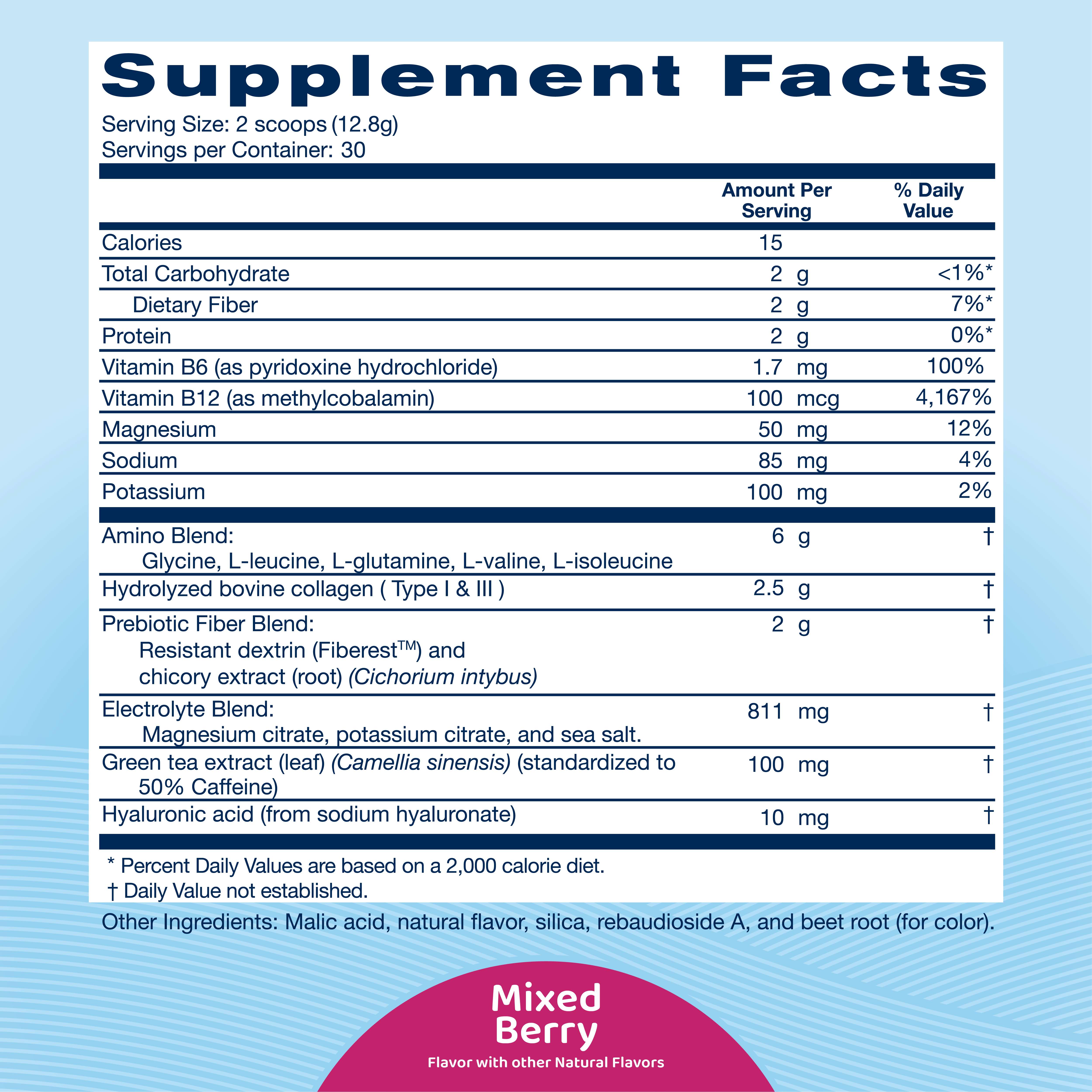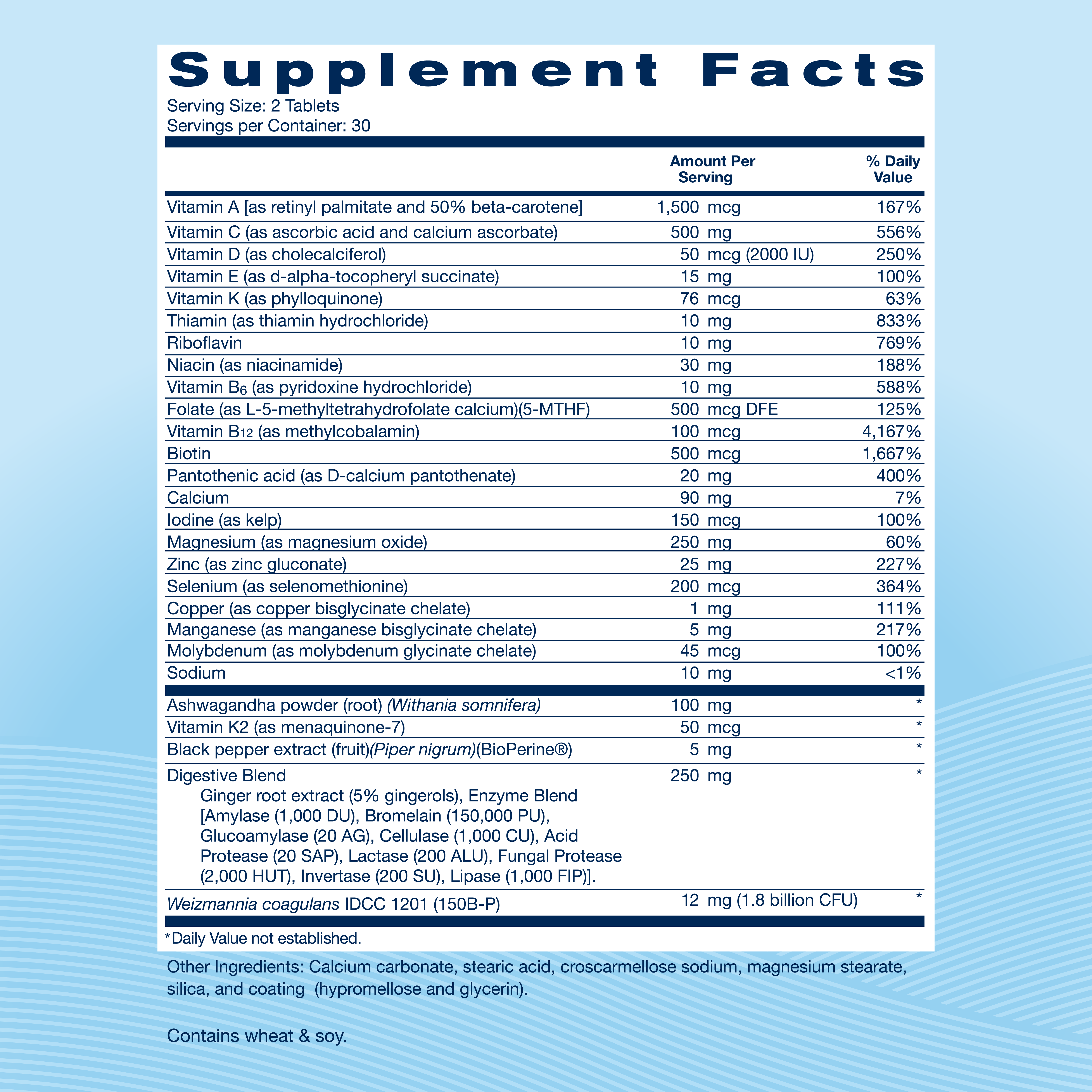
Digestive Support for GLP-1 Users
Share
GLP-1s deliver outstanding results for many users on their path to better health, however, they can come with unwanted side effects such as bloating, nausea, and constipation. The good news? A proactive approach can make all the difference. We’ve put together a few smart strategies to help support your digestion as you adapt to your GLP-1.
1. Modify Your Diet
GLP-1s affect both the brain and the digestive system, working together to slow the rate at which the stomach empties. As your body adjusts to these new signals, it’s common to experience some digestive discomfort during the transition.
Do This -
● Eat smaller meals more frequently to help with gastric discomfort as the stomach holds on to food longer. Large amounts of food overwhelm the stomach, leading to discomfort.
● Limit high-fat foods, as they slow digestion even more, which can worsen side effects.
● Focus on easy-to-digest, nutrient-dense foods, like lean proteins, cooked veggies (raw veggies can cause bloating), and fruits (avoid high-fiber fruits with skin or seeds).
2. “Up” Your Fiber
Dietary fiber works to treat and prevent constipation which can come from delayed gastric emptying. Fiber offers a 1-2-3 punch to relieve constipation, it:
● Adds bulk to the stool.
● Supports the microbiome, the healthy balance of bacteria in the digestive tract.
● Helps with gut motility, the coordination of muscle contractions in the intestines that push food along the digestive process.
Women should generally aim for around 21-25 grams of fiber a day, and men 30-38 grams. However, your body is already adjusting to GLP-1 medication, so let it adapt to increased fiber by adding it gradually. If you aren’t hydrating sufficiently, that can lead to constipation since fiber absorbs water. A general rule of thumb is to drink at least half your body weight in ounces of water daily.
Do This -
Eat fiber-rich foods like:
● Whole Grains - oats, barley, quinoa, whole wheat bread.
● Legumes - lentils, chickpeas, beans, peas.
● Fruits and vegetables- leafy greens, berries, Brussels, cauliflower.
● Nuts and seeds - almonds, walnuts, chia, flax, sunflower.
3. Incorporate Prebiotics and Probiotics
Prebiotics and Probiotics provide excellent support for gut health by serving different but complementary purposes.
Probiotics help to balance the gut microbiome (the ecosystem of microbes that live in your intestines), while prebiotics support the growth and activity of those beneficial bacteria. They’re typically non-digestible fibers that help probiotics thrive.
Do this -
Replenza is Nutritional Support formulated by physicians specifically for people taking GLP-1s, created with essential vitamins and minerals, and formulated for maximum absorption. The Daily Replenisher and Daily Nutritional Supplement ensure your body gets the nutritional support it needs and fills the gaps while also supporting digestive health with prebiotic and probiotic support.
● Prebiotic support is in the Replenza Daily Replenisher. It is a refreshing drink and a great way to start your day. In addition to prebiotics, it also supports muscle recovery with its unique amino acid blend, while also supporting skin elasticity with collagen.
● Probiotic support is in the Replenza Daily Nutritional Supplement. In addition to probiotic support, it includes a powerful blend of 22 essential vitamins and minerals scientifically formulated for optimal absorption.
Together, they are essential in safely reaching sustainable weight loss goals.
GLP-1s are a powerful tool for taking control of your health, but proper nutrition is key to feeling your best along the way. That’s where Replenza comes in, making it simple to support your body with what it needs. Check out more nutritional tips on the blog!


